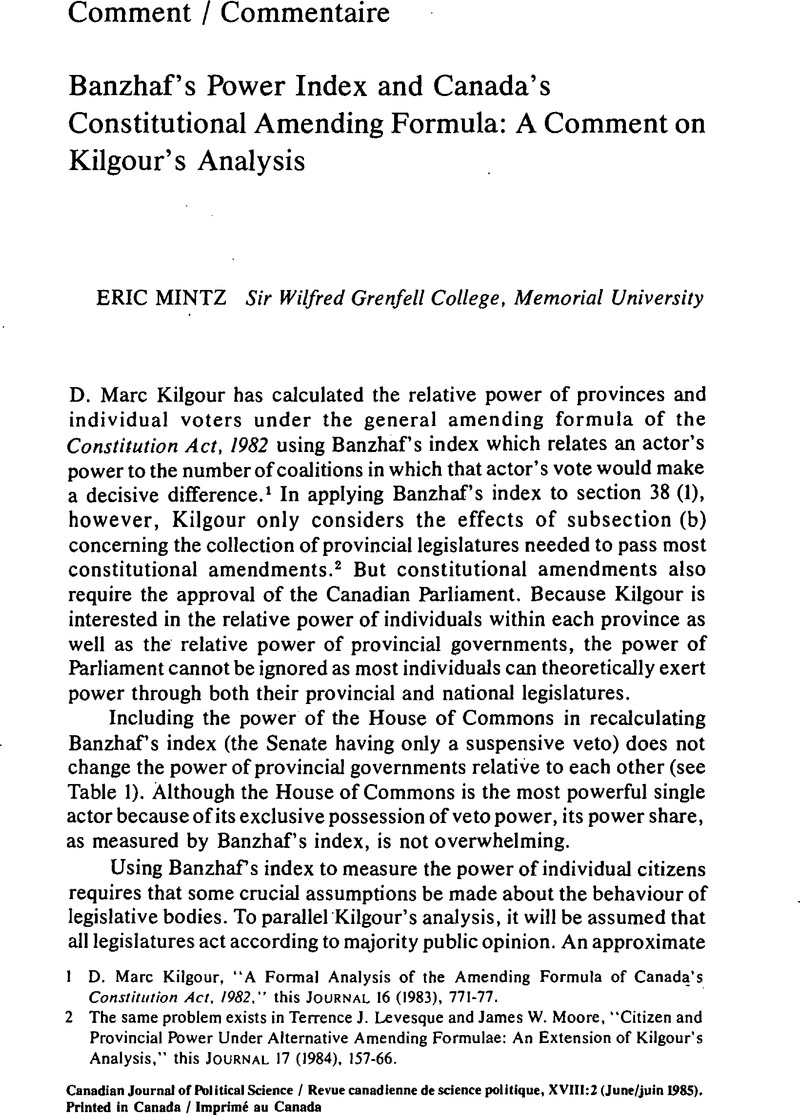Published online by Cambridge University Press: 10 November 2009

1 Kilgour, D. Marc, “A Formal Analysis of the Amending Formula of Canada's Constitution Act, 1982,” this JOURNAL 16 (1983), 771–77.Google Scholar
2 The same problem exists in Levesque, Terrence J. and Moore, James W., “Citizen and Provincial Power Under Alternative Amending Formulae: An Extension of Kilgour's Analysis,” this JOURNAL 17 (1984), 157–66.Google Scholar
3 For a similar procedure see Banzhaf, John F. III, “One Man, 3.312 Votes: A Mathematical Analysis of the Electoral College,” Villanova Law Review 13 (1968), 320.Google Scholar
4 Representation in the House of Commons does not, however, fully reflect the principle of individual equality. Thus if the governing party in the House of Commons weighted public opinion according to the relative importance of voters in different constituencies, individuals in the Territories and in Prince Edward Island would have significantly more power than indicated in Table 2.
5 The principle of provincial equality can also be seen in the provision of section 38 (3) which gives any province the right to “opt out” of constitutional changes that would reduce provincial powers.